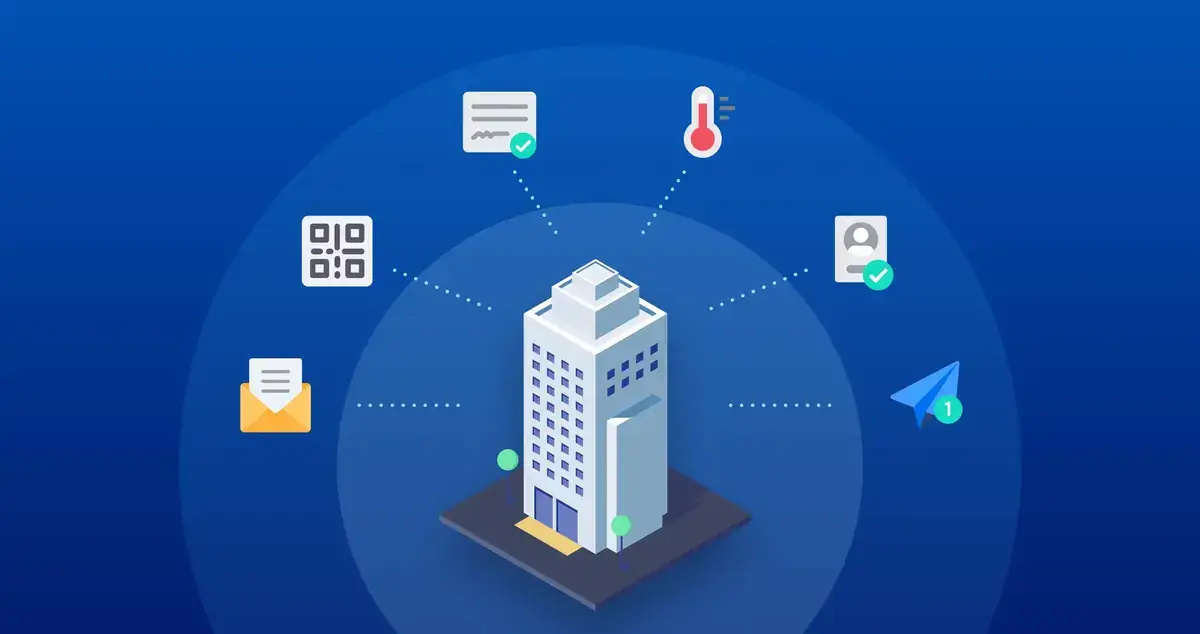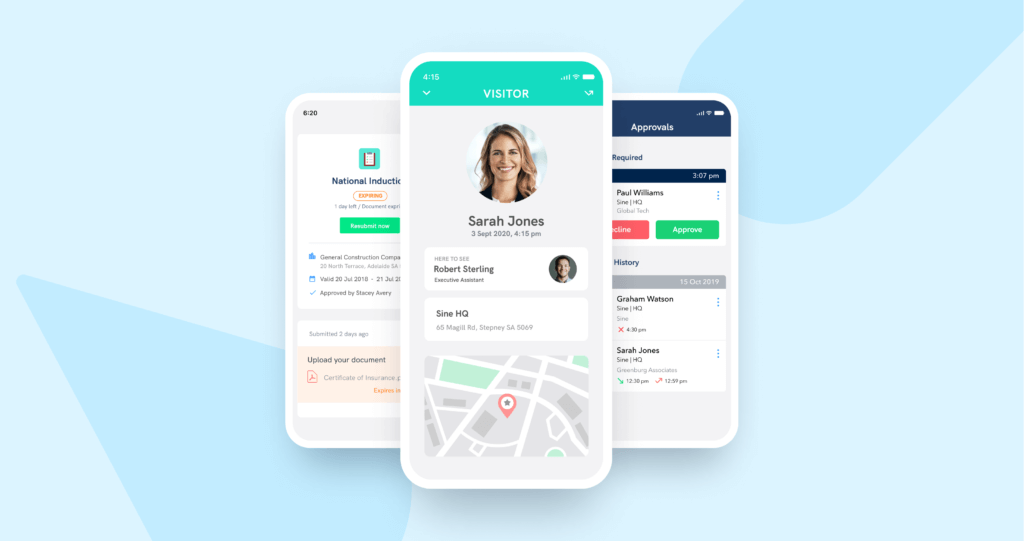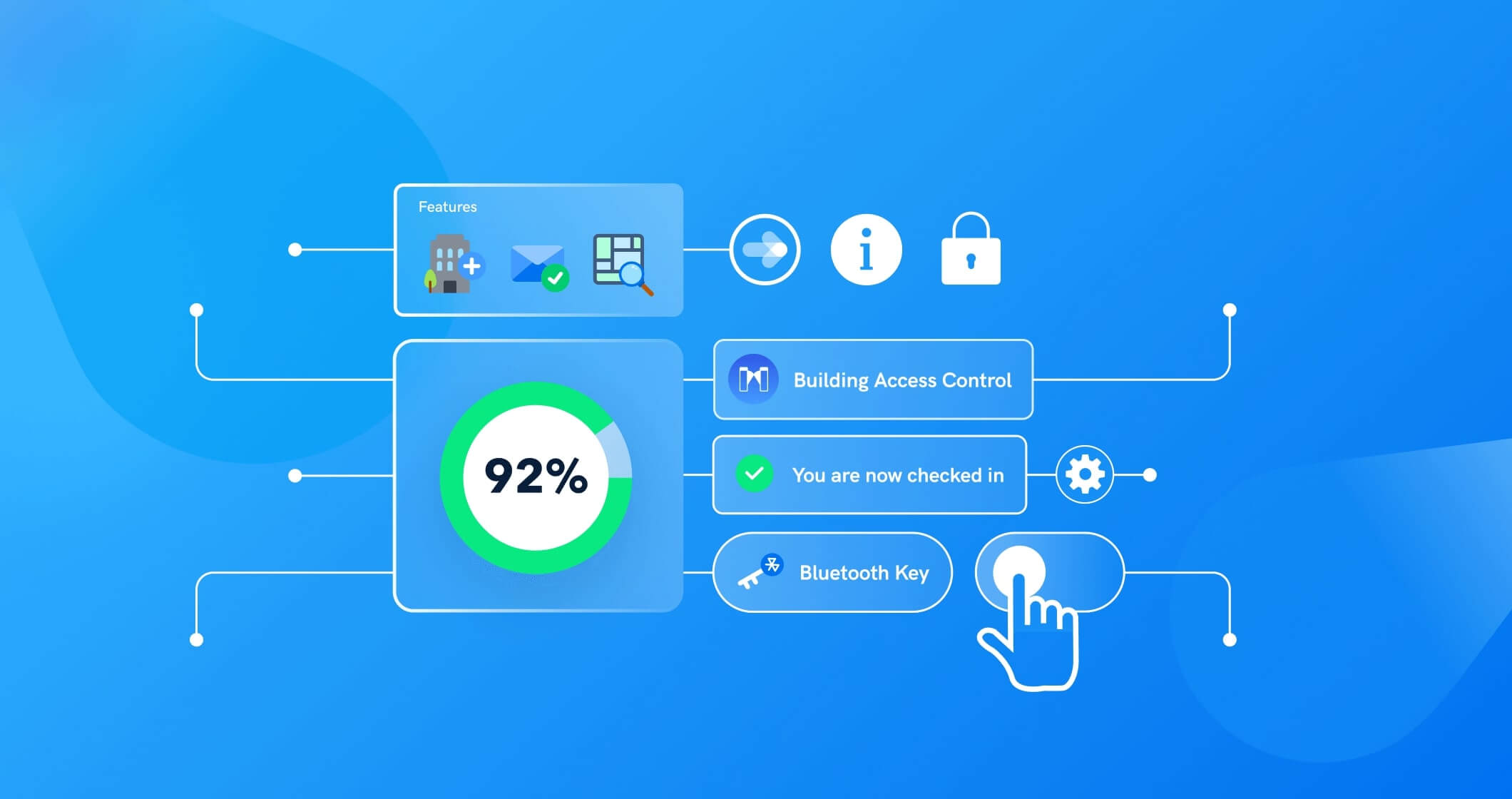
As many workplaces prepare for a return to the office or get ready to accommodate hybrid workers at least part-time, the increase in office building usage will likely lead to more visitors. Visitor traffic has largely declined around the world with each new variant. But it inevitably recovers, occasionally nearing pre-pandemic levels in between.
To keep workers and visitors safe, healthy, and productive, it may be necessary to rethink your company’s workplace visitor policy in light of these shifts. Below, we’ll look at how visitor management may change in the coming months and what it takes to create, implement, and scale the workplace visitor policy that’s best for your building or business.
Preventing strangers from entering the workplace has obvious safety benefits - but even expected visitors often need to be scheduled, monitored, identified, or have their credentials checked to keep the workplace operating smoothly. That’s why more businesses are using visitor management systems (VMS) to track visitors to augment their existing reception features or act as a security and safety feature on job sites and in other facilities.
A good VMS has an array of features that allow businesses to:
A VMS protects businesses, employees, and visitors and provides job site and building managers with maximum control over who enters a building and how they move around it. And during the COVID-19 pandemic, visitor management systems provided a touchless interface and questionnaires that set expectations for public health.
Of course, you can’t just set up a welcome kiosk and call it a day. A VMS requires a business to have a workplace visitor policy in place.

A workplace visitor policy is a statement setting out the rules and guidelines that apply to guests entering and moving around your facility. It may include entry requirements, areas to avoid, and advice on staying safe and avoiding injury or exposure. The policy may change depending on the type of visitor. It also needs to be clear about all expectations and precautions, as well as the consequences (such as removal from the property) visitors can expect for violating the policy.
When putting a workplace visitor policy into place, companies will likely need to consider how new circumstances (such as pandemic precautions) may change the nature of visits and be ready to communicate new protocols to visitors, even if it means instructing them to defer to signs and security officers for requirements for entry and visitation.
The goal is to avoid risk to the company and the visitor and to protect people and property inside the building from everything from unnecessary distraction to criminal activity. However, the challenge is to simultaneously provide a welcoming atmosphere to appropriate visitors while doing so. Ultimately, this is the job of a workplace visitor management system (VMS) that can provide anything from welcome kiosks to mobile scheduling to on-site geofencing capabilities to monitor visitors’ movements once they are on-site.
Whether a company employs a receptionist or automates reception via a VMS to implement workplace visitor policies, there are standard questions that employers can ask themselves to get started on a workplace visitor policy.
Some of the standard considerations that go into a workplace visitor policy include:
Businesses that deal regularly with vendors, contractors, and delivery personnel often strive to make those visits more streamlined, especially if entering the building or worksite requires ID badges each time. In those cases, it’s helpful to consider:
More recently, COVID-19 and workplace violence have necessitated new and evolving protocols as well as new training for employees. They’ve also made it necessary to think in advance about how an altered workplace visitor policy can be both comprehensive and flexible and implemented as soon as it’s needed. Considerations may include:

Employers often wonder how they can manage guests at scale across all their locations. This is typically where a cloud-based VMS comes into play since it implements your workplace visitor policy with maximum efficiency. For example, it can standardize the entry process to make entry quicker and accept changes to entry requirements when circumstances change or compliance protocols differ between worksites.
In order to implement a scalable policy, not only is it helpful to utilize VMS technology, but it’s often crucial to make sure employees understand the policy themselves (since they may be the ones inviting visitors). Training employees about the policy, accepting feedback on what aspects won’t work, ensuring the policy is accessible at all times to employees, notifying employees of changes, and sending out reminders when there are policy violations can help solidify the importance of a workplace visitor policy.
In cases where the visitor policy needs to be altered, ensuring a safe space for open discussion about policy changes and clarifications can also help businesses scale up policy protocols when necessary. This may be especially helpful as employees return to the office and need to acquaint themselves with visitor policies that have changed because of the pandemic and other recent events. A reminder of the protections in place can also help reduce return to office anxiety.
The long list of considerations about securing a worksite and protecting employees and property may make it sound like employers need to create a fortress. But in many cases, providing a welcoming atmosphere for visitors and providing for their safety is the primary concern.
Creating a workplace visitor policy requires anticipating the potential threats visitors may pose to a workplace (or that the workplace may pose to them). But creating limitations is only part of the policy-making process. Once you have a thoughtful workplace visitor policy in place, a Visitor Management System, such as Sine’s, can help you greet your visitors in a way that is professional, informative, safety-oriented, and efficient.
Instead of waiting in long lines and being presented with piles of paperwork to sign, a VMS can be a relatively neutral mechanism for managing people without being unnecessarily exclusionary.
Ready to upgrade to modern visitor management? Book a demo with the Sine team today!